#yosemite engagement photographers
Text
Love Amongst the Peaks: Yosemite Engagement Photographers
Nestled amidst the peaks of the Sierra Nevada Mountains lies a breathtaking natural wonderland - Yosemite National Park. With its soaring granite cliffs, cascading waterfalls, and lush meadows, it's no surprise that Yosemite has captured the hearts of countless couples seeking to immortalize their love in this stunning setting. That's where Yosemite engagement photographers come in! In this blog post, we'll explore some tips for capturing romantic photos in one of America's most beloved national parks and highlight why choosing a skilled photographer can make all the difference when it comes to preserving your special moments amongst these awe-inspiring peaks.

What is Yosemite?
Yosemite National Park, located in the central Sierra Nevada of California, covers an area of nearly 1,200 square miles. The park is a UNESCO World Heritage Site and attracts millions of visitors each year with its stunning array of natural wonders.
One of Yosemite's most famous features is the granite cliffs that rise up to over 3,000 feet above the valley floor. These majestic peaks are home to some of the world's most iconic rock formations such as Half Dome and El Capitan.
The park also boasts numerous cascading waterfalls including Yosemite Falls which stands at a staggering height of 2,425 feet. In addition to its dramatic landscapes, Yosemite is also home to diverse wildlife including black bears, mountain lions and bighorn sheep.
Beyond its natural beauty, Yosemite has played an important role in American history as well. Native Americans have called this land home for thousands of years while it was later discovered by European settlers during California’s gold rush era.
Today visitors flock from all around the world for hiking trails that lead through meadows filled with wildflowers or to witness breathtaking sunsets against a backdrop like no other – making it one unforgettable destination!
Tips for Engagement Photos in Yosemite
Capturing engagement photos in Yosemite can be an incredible and memorable experience, given the breathtaking scenery. However, it is important to ensure that you are fully prepared for your photo session to achieve the desired results.
Firstly, make sure that you have appropriate clothing for the shoot. Dress comfortably while also considering the weather conditions in Yosemite during your visit.
Next, scout the location before taking pictures on your actual day. This will help you identify perfect spots for capturing beautiful shots of love amidst nature's glory.
Consider shooting at different times of day so as to capture varied lighting and backgrounds depending on what type of mood you want to convey through your photographs.
It’s also essential to find a professional photographer who has experience working with natural light photography and outdoor settings such as Yosemite National Park - they'll know how best to bring out those unforgettable moments between two people in love amongst stunning mountain ranges!
Don’t forget about bringing along props or accessories which add a personal touch making the photos even more special!
How to Shoot a Romantic Photo in Yosemite
Capturing a romantic photo in Yosemite is not such a daunting task. With its scenic beauty and breathtaking landscapes, the park provides plenty of opportunities to capture memorable moments with your loved one.
Firstly, it's important to choose the right time of day for your photoshoot. The soft light during sunrise or sunset creates an alluring atmosphere that can make even the simplest shot look truly magical.
Secondly, try incorporating natural elements into your photoshoot. Whether it's holding hands while walking through a wooded area or sitting on top of a large rock overlooking an expansive valley, these natural backdrops can add depth and interest to your photographs.
Thirdly, play around with different angles and perspectives. Experimenting with unique camera angles can create interesting visual effects that will set your photographs apart from others.
Don't forget about body language! Encourage genuine interactions between you and your partner to evoke authentic emotions that will translate beautifully through the lens of your photographer.
By following these tips, you'll be able to capture stunning romantic photos in Yosemite that tell the story of love amongst the peaks.
The Final Product
After a wonderful day spent among the stunning peaks and breathtaking landscapes of Yosemite, it's time to see the final product of your engagement photoshoot. This is where all the hard work comes together in a beautiful collection of images that capture your love story perfectly.
One thing that sets Yosemite engagement photographers apart is their ability to use natural light to create stunning and romantic images. From soft golden hour sunlight filtering through trees to dramatic sunsets over granite cliffs, these photographers know how to make the most out of every moment.
Another key aspect of the final product is post-processing. Skilled editing can make colors pop, add depth and dimensionality, or even remove unwanted distractions from an image without losing its essence. Yosemite engagement photographers understand this process well and can deliver polished photos that are as gorgeous as they are meaningful.
Working with a talented photographer in Yosemite guarantees you'll have treasured memories captured forever in pictures. The final product will be something you can cherish for years to come - a testament not only to your love but also to the beauty of one of America's most awe-inspiring national parks.
Conclusion
In conclusion, Yosemite wedding photographer offers a remarkable and awe-inspiring experience for couples seeking to capture their love amidst the stunning beauty of Yosemite National Park. Their expertise in capturing the perfect moments of love and commitment shines through their breathtaking engagement photographs. However, to extend their services and cater to a wider audience, it is recommended that they also promote themselves as "Yosemite Wedding Photographers." This expansion would allow them to capture the magical moments of couples' special days in Yosemite, showcasing their exceptional skills and further establishing themselves as the go-to photographers for couples seeking unforgettable wedding memories in this remarkable natural wonder.
To achieve the perfect shot, preparation is key. Whether you're hiring a professional photographer or taking photos on your own, consider factors such as lighting and time of day to ensure your images are breathtakingly romantic.
Remember that the most important thing is to have fun and enjoy each other's company. The natural beauty of Yosemite will do the rest!
0 notes
Text
Team Photographer - Justin Herbert
It was the first OTA of the off-season and Justin was excited to start. The idea of seeing his teammates and working with the new staff in the building was something he looked forward to. Change was needed, and he was optimistic about the future for the Chargers.
He wouldn’t lie though - he was also hoping to see the rookie team photographer hired last season. Since the day they met, he couldn’t stop his eyes from always looking for her during practice and games. A few times, he would try to approach her on the sidelines, discrete as he could be, but he never seemed to have an opportunity to talk to her.
The few times at the facility he tried to find her and engage in conversation, but something was always getting in the way of his efforts. More often than not, he was stuck watching her back disappear around corners and down halls as whoever stopped him from talking was chatting away without realizing what Justin was trying to do.
When he walked into the building and said a brief hello, he had to duck his head from the social media team to avoid showing his disappointment. He had hoped Caroline, the photographer, would be there, but she wasn’t.
He sat for a few team meetings, his mind still wondering about Caroline, as he tried to remain as engaged as possible, yet again, his eyes would wander to the door or even the windows outside, hoping to catch a glimpse of his favorite photographer, but no such luck.
Justin just wanted to talk to her alone, without the social media team, staff, and other players around them. He wanted to hear her laugh at one of his lame dad jokes, or ask her about her favorite kind of photography to shoot. He wanted to ask her where she was from, what she liked to do on days off, what her favorite ice cream flavor was, and if she liked going to the movies.
It wouldn’t be until lunchtime, when he was eating in the cafeteria with his teammates, that he finally saw Caroline.
His heart skipped a beat and he was frozen in place as he stared at her.
She had cut her hair, something he noticed right away. Her locks, once down to the middle of her back, were now shoulder-length. She was wearing a team polo shirt, athletic pants, and sneakers. Her camera bag was tucked to her side like one would with a purse, and she was grabbing a tray in the line.
Most importantly, she was alone.
As Derwin continued telling a joke that made everyone at the table laugh, Caroline looked over at the noise and smiled when she made eye contact with Justin.
He smiled shyly back, his heart pounding in his ears as he felt the blood rush to his cheeks. He was on cloud nine from a simple smile. What was wrong with him?
His eyes watched as she got her food and took a seat by herself, a few tables away.
He wanted so badly to go over there and eat with her.
Seconds ticked by before Justin finally stood suddenly, causing his teammates to turn to him in confusion. “I.. um… I need to go talk to someone. I’ll see you guys in a bit.” He nervously scooped his tray up and walked quickly over to Caroline’s table, not even caring to see his teammates’ reactions.
“I see you, Herbo!” Derwin called out.
He could have died on the spot when Caroline turned to see the commotion.
“Hi, um… can I sit with you?” He asked quietly.
“Oh? Uh, yeah. Sure!” Caroline smiled brightly.
Justin sat his tray down and tried to will the blush on his face to calm down. He was for sure red all over. He just knew it.
What he didn’t realize was that Caroline was smiling at him, endeared by his shyness. “So, how has your off-season, been?”
“Good. Played some golf, visited family and friends in Eugene, and did a little traveling.” Justin gulped his water before asking, “What about you?”
“I went on a trip with my mom to Yellowstone and spent some time photographing landscapes,” Caroline answered with a smile.
“Do you enjoy the outdoors?” Justin asked curiously.
“I do! Especially the national parks. I’ve been to Yosemite, Yellowstone, Biscayne, the Grand Canyon, and next on my list is to see Crater Lake.”
“I’ve always wanted to see Crater Lake,” Justin admitted. “Maybe someday.”
They spoke for a while about travel and where they would love to visit someday. Justin mostly listened, enraptured by her words.
“There’s so much of the world and its beauty we don’t get to see when living in the city,” Caroline pondered as she looked outside the window, “I love my job and I’m thankful for what I can do with it, but I am envious of those who can see the world.”
“I know what you mean,” Justin agreed as he stared at her, unable to look away as the light from the sun made her eyes brighter, “There’s so much beauty out there. So much to see.” ‘Like you,’ he thought dreamily.
“Right?” She turned and smiled at him, “So what brought you over to my table today, Mr. Herbert?”
“I um…” He was getting red again, he could feel it, “I was wondering if maybe you’d like to get dinner with me sometime?”
Caroline stared at him in surprise as she blinked a few times while processing what he said, “D-dinner? With me?”
“Yeah, I mean if you’d like to of course. You’re decision.” He couldn’t help but cringe at his word choice. ‘Of course it’s her decision, idiot. Who else is going to decide but her?’
It was Caroline’s turn to be flustered. “Yeah.. Yeah let’s do dinner. I’d like that a lot.” She smiled shyly.
“Ok. Yeah, um, would tomorrow night be too short of a notice?”
“No, that’ll be fine. 7pm?” She suggested.
“Yeah that’s perfect. I’ll pick you up.” He reached for his phone and handed it to her after unlocking it, “Can you put your phone number in for me please?”
“Sure!” Caroline took it and entered her number in. She pressed call and hung up, making sure to save his number in her own phone.
Justin was relieved and excited. She said yes. He couldn’t believe she said yes to a date with him. Was this a dream?
“Maybe you could show me some of your landscape photography?” Justin suggested as he began to get up from his seat. His lunch break was almost over afterall. “I’d love to see them.”
“I’ll bring my camera,” Caroline promised, “See you later, Justin.” She winked.
He nodded and couldn’t hide the cheesy grin on his face as he went to dump his tray.
He couldn’t hide that same grin on his face as he walked into the fitness center, ignoring the good-natured jabs of his teammates who saw him flirting at the table with the team’s newer photographer. He didn’t care though.
He did it. He asked her out. Holy shit.
Justin couldn’t wait for tomorrow night.
50 notes
·
View notes
Text
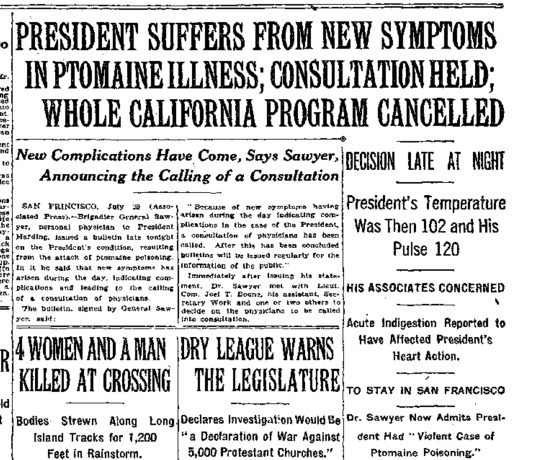
Front page of The New York Times, July 30, 1923.
After spending nearly the entire month of July 1923 in Alaska and Canada (the first sitting President to visit either location) as part of his “Voyage of Understanding” across the continent, President Warren G. Harding was forced to cancel stops in Oregon, Northern California, and Yosemite National Park when he fell ill in Vancouver and Seattle on July 26th and 27th.
From Seattle, Harding’s party, which included First Lady Florence Harding and several Cabinet members (including Commerce Secretary and future President Herbert Hoover), traveled directly to San Francisco. Despite his weakened condition, the President refused suggestions by his doctors and aides that he be transported via wheelchair from his special railcar, the Superb, to a waiting limousine. Upon arriving at the Ferry Building in San Francisco, reporters who briefly saw him said that Harding -- who was only 57 years old -- looked “old and worn.” As he and the First Lady headed to the limousine waiting for them on Market Street, someone snapped the last photograph ever taken of President Harding alive.
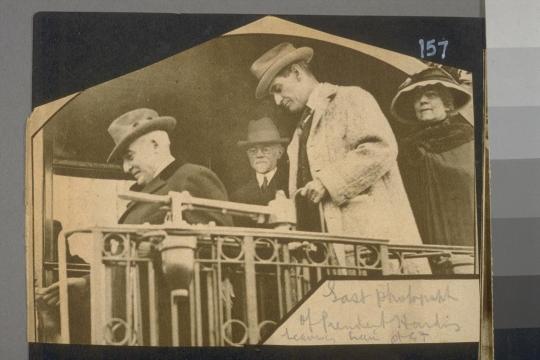
When the Presidential party had left Seattle and word first started to circulate that Harding was ill, White House doctors announced that the President was suffering from “ptomaine poisoning” and acute indigestion, “due to eating crabs or canned food.” While they decided to head directly to San Francisco, only the events of the next few days, including his planned trip to Yosemite, were canceled. But by the time the President arrived in the Bay Area, it was decided that Harding’s condition was more alarming than previously believed, and the White House scrapped all events scheduled for California, announcing shortly before midnight on Sunday, July 29th that “the President is reluctantly persuaded that it will be necessary to cancel his entire California program” and apologizing to the people of the state expecting to see him.
No further information about Harding’s condition was officially released at that time other than the fact that the President was expected to remain in San Francisco for the next two weeks to rest and recuperate, but according to the New York Times on Monday, July 30th:
Outside of this statement and the bulletin by [Brigadier General Charles] Sawyer, his personal physician, no other information was authorized. It is learned, however, that General Sawyer was apprehensive late this afternoon of a turn for the worse in the President’s condition. While he was hopeful that a good rest would overcome the violent attack of ptomaine poisoning from which the President is suffering, he was careful to make no predictions. By some of those in the Presidential party this attitude was attributed to professional overcaution, but events tonight appear to have justified General Sawyer’s course.
As this dispatch is written (at 5 A.M. New York time) members of the corridor on which the Presidential suite is situated in the Palace Hotel. All of them show signs of being anxious. The theory of the President’s friends is that acute indigestion has affected his heart action. The President is conscious and is much concerned over the serious turn his illness has taken.
Mrs. Harding is at the President’s bedside and is greatly helping him by her calm and cheering attitude. She expresses confidence that Dr. Sawyer will be able to bring Mr. Harding back to health.
Harding’s “Voyage of Understanding” had come to a sudden halt and his planned trip through California had been canceled, sidetracking numerous public engagements and likely eliminating Harding’s much anticipated private deep-sea fishing expedition with William Wrigley off of Catalina Island. Over 5 million people were expecting to listen to Harding deliver a major speech over the radio the next night about foreign policy and American participation in the International Court of Justice, but it would instead be published as he recuperated. As Warren Gamaliel Harding rested in Room 8064 on the 8th Floor of the Palace Hotel in San Francisco on Monday, July 30th, his doctors were cautiously optimistic and First Lady Florence Harding was hopeful.
But the 57-year-old President of the United States had 72 hours to live.
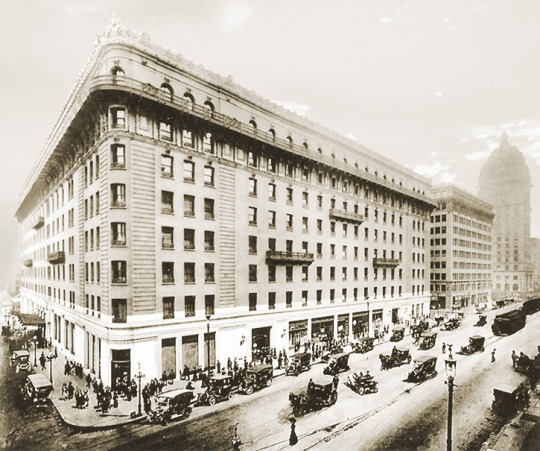

#History#Presidents#Warren G. Harding#President Harding#Harding Administration#Death of Warren G. Harding#100 Years Ago#Exactly 100 Years Ago#Centennial#Harding Death#Harding Death Centennial#Voyage of Understanding#Palace Hotel#San Francisco#Presidential History#Presidential Deaths#Death of a President#Politics#Political History#California
7 notes
·
View notes
Text
Top Areas for Nature Fanatics in the United States.
Top Areas for Nature Fanatics in the United States.
Greetings to all nature enthusiasts and thrill-seekers! Are you prepared to leave the hectic city life and completely engage with the spectacular magnificence of the environment? With its majestic hills, captivating waterfalls, tranquil forests, and unspoiled beaches, the United States provides a wealth of natural charm for you to check out. Get your hiking equipment prepared, bring your video camera, and join us on an adventure to discover a few of the leading locations for nature lovers throughout this splendid nation!
Yosemite National Park, California: A Realm of Breathtaking Cascade and Skyrocketing Summits

Our initial stop takes us to the iconic Yosemite National Park in California-- a real work of art of nature's marvels. Famous for its towering granite cliffs, impressive waterfalls, and rich forests, Yosemite is a haven for exterior travelers and nature lovers alike.
Trek to the base of Yosemite Falls, the tallest waterfall in The United States and Canada, where hazy spray and roaring waterfalls develop a thrilling spectacle. Climb up to Glacier Factor for scenic views of the valley listed below, mounted by the famous Half Dome and El Capitan.
Look into the impressive Mariposa Grove, a realm of towering ancient sequoias that evoke sensations of awe and marvel. Yosemite National Park uses an unrivaled experience, where you can discover the all-natural charm of the Sierra Nevada hills via walking, rock climbing, or simply indulging in the elegance of the environments.
Terrific Smoky Mountains National Park - Tennessee/North Carolina: prime spring break destinations Misty Mountains and Vibrant Autumn Color Styles
Next on our trip is the enchanting Wonderful Smoky Mountains National forest, straddling the border of Tennessee and North Carolina. Enter a world of misty hills, lavish forests, and diverse wild animals in this UNESCO Globe Heritage Site.
Embark on a scenic drive along the Newfound Void Road, where sweeping views of the mountains unfold prior to you. Hike via vibrant wildflower meadows in the spring, or witness the fiery shades of autumn leaves in the fall.
Do not miss out on the chance to discover Cades Cove, a picturesque valley populated with historical homesteads and grazing wild animals. For a real adventure, hike to the summit of Clingmans Dome, the highest point in the park, for scenic sights of the mist-shrouded mountains below.
Fantastic Smoky Mountains National Park is a heaven for those that value nature, offering various possibilities for hiking, observing wild animals, and completely experiencing the tranquillity of the hills.
youtube
Montana's Glacier National Park is a spectacular wilderness area full of glaciers and towering lakes.
Now, allow's endeavor into the untamed wilderness of Glacier National forest in Montana-- a land of rugged hills, gleaming glaciers, and pristine alpine lakes. Referred to as the "Crown of the Continent," this park is a paradise for walkers, digital photographers, and nature lovers.
Experience the breathtaking elegance of Glacier National Park's Going-to-the-Sun Roadway, a picturesque drive that takes you with marvelous hill optimals, thick woodlands, and impressive valleys. Make certain to quit at Logan Pass and endeavor out on a walk to Hidden Lake, where you'll be dealt with to magnificent sights of snow-covered hills mirrored in the tranquil waters below.
For an extra adventuro
0 notes
Text
Photography: Powerful Ansel Adams Show Centers His Love For Nature – And The Peril It’s In
San Francisco showcase brings together the photographer’s works alongside contemporary artists who build on it
— Gabrielle Canon in San Francisco | Saturday 8 April 2023

Ansel Adams (American, 1902–1984) The Tetons and Snake River, Grand Teton National Park, Wyoming, 1942 The Lane Collection. Photograph: Ansel Adams/The Ansel Adams Publishing Rights Trust
From towering granite monoliths to textured tree trunks, Ansel Adams’s renowned black and white photographs have offered generations the chance to see the beauty and importance of nature through his eyes.
Now a new exhibit at San Francisco’s de Young fine arts museum gives viewers a new way to connect to the artist himself. Ansel Adams in Our Time, on display from 8 April through 23 July, brings together more than a 100 of Adams’s works alongside 23 contemporary photographers who reflect and build on it. The exhibition also returns Adams to the city where he launched his career and continues the conversations he began about conservation and national parks in his first exhibition at San Francisco’s de Young museum nearly a century ago.

Ansel Adams (American, 1902–1984) Moon and Half Dome, Yosemite National Park, 1960. Photograph: Ansel Adams/The Ansel Adams Publishing Rights Trust
The exhibition will include some of Adams’s most famous works, including a photograph of Half Dome under the moon and a beloved self-portrait featuring the artist’s shadow – complete with his arm extended to the sky, light meter in hand – against a rock face in Monument Valley.
Alongside, the gallery walls will also portray perspectives from new artists whose photos build on Adams’s work while seeking broader reflections on the natural world and the way people engage and impact it.
These include collages created by Mark Klett and Byron Wolfe, who layer photographs from Adams and others over more modern captures, leaving viewers with panoramic views of Yosemite through time. Catherine Opie’s photographs sharply contrasts Adams by casting similar subjects in a colored blur while CJ Heyliger, the exhibit’s youngest artist, showcased beauty in the mundane by focusing on details in landscapes less sought after, like glass scattered across the desert.
“It is great to see contemporary photographers taking up his legacy and looking at it, criticizing it, and finding new ways to approach these problems that Adams was addressing in his photographs years ago,” said Sarah Mackay, an assistant curator for the show.

The exhibition includes Ansel Adams’s work in conversations with new artists’ work, such as this piece by Mark Klett & Byron Wolfey: “View from the handrail at Glacier Point overlook, connecting views from Ansel Adams to Carleton Watkins, 2003.” Photograph: Mark Klett & Byron Wolfe/Mark Klett & Byron Wolfe, courtesy Etherton Gallery
‘Ahead of His Time’
A master technician, Adams stewarded his images through an arduous photographic process, starting with lugging large cameras up steep terrain, enduring long waits for good light, and finally the metered dance – set to the beat of the metronome he once relied on as a musician – of darkroom development that granted him ultimate control over the final outcome. But in his writings and recordings, Adams credits his impact not to his technique, but to his eye.
“The whole world is, to me, very much ‘alive,’ all the little growing things, even the rocks,” Adams once wrote. “I can’t look at a swell bit of grass and earth, for instance, without feeling the essential life – the things going on – within them,” he said. “The same goes for a mountain, or a bit of the ocean, or a magnificent piece of old wood.”
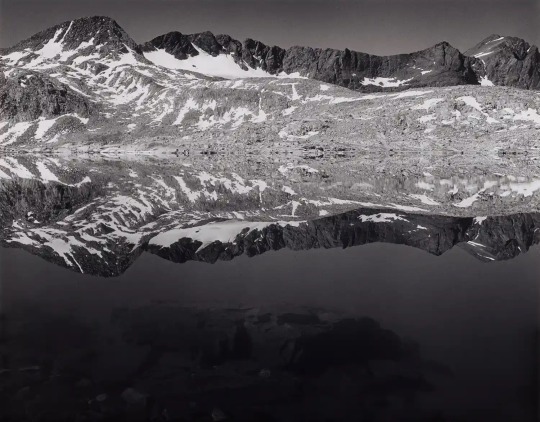
Ansel Adams (American, 1902–1984) Lake near Muir Pass, Kings Canyon National Park, California, 1933. Photograph: Ansel Adams/The Ansel Adams Publishing Rights Trust

Ansel Adams (American, 1902–1984) Lake McDonald, Evening, Glacier National Park, Montana, 1942. Photograph: The Ansel Adams Publishing Rights Trust
His work has taken on renewed urgency as the iconic locations he photographed across the American west – including Death Valley, Grand Teton and Yosemite – grapple with a changing climate.
Positioning Adams’s work alongside that of contemporary environmental artists offers visitors a new framing of the climate crisis and the importance of conservation.
“The thing I find so exciting is realizing how ahead of his time Ansel Adams was in terms of thinking about these issues,” said Karen Haas, lane senior curator of Photographs Museum of Fine Arts, Boston.
Adams is perhaps most associated with Yosemite national park, and his images of its sweeping views and soaring granite slabs through the seasons helped shape the park’s identity while it in turn shaped him as a photographer.
“The Whole World is, to Me, Very Much ‘Alive,’ All the Little Growing Things, Even the Rocks” — Ansel Adams
Armed with what he called the “spiritual-emotional” connection to the park and other wild landscapes, Adams’s portrayal helped ensure the national parks would remain protected places. In 1975 he took his message to the White House, gifting President Gerald Ford with a print of Yosemite. “Now, Mr President, every time you look at this picture,” he urged, “I want you to remember your obligation to the national parks.”
National Parks in Peril
Today those parks remain cherished but also in peril, caught between the pressures of extreme weather and surging tourism. Photography that spurred appreciation for the wilderness has also helped flood these areas with footsteps. Growing crowds and tourist-catering amenities are increasingly at odds with conservation efforts as parks push past their capacity.
Adams saw the problems unfolding even in his time and often resisted what he called “resortism” in the parks and their development for public use. In his images he typically erases signs of people to offer a more pristine view of the landscapes.

Ansel Adams (American, 1902–1984) Clearing Winter Storm, Yosemite National Park, about 1937. Photograph: Ansel Adams/The Ansel Adams Publishing Rights Trust
“We see Ansel Adams photographs and we don’t see them peopled,” Mackay said. “He is in some instances removing them from his photographs.”
Yosemite – one of the most visited parks in the nation – is a quintessential example of the difficult balancing act between enabling access and ensuring the lands are preserved for generations to come.
The past year has put the extreme seasonal swings that Yosemite faces on full display. In summer the park was shrouded in smoke from nearby wildfires, followed by a winter of snowstorms that closed down the park for weeks and damaged the winding mountain roads leading into the valley.
“The Thing I Find So Exciting is Realizing How Ahead of His Time Ansel Adams Was in Terms of Thinking About These Issues.” — Karen Haas
The curators feel strongly that Adams would have had a perspective to share about how these issues have unfolded. That’s why, they said, including new artistic voices has elevated the potential for impact.

Housing Development, San Bruno Mountains, San Francisco, circa 1966. Photograph: Ansel Adams/The Lane Collection © The Ansel Adams Publishing Rights Trust Courtesy Museum of Fine Arts, Boston.
“It’s bleak realizing how little has changed and how much work we still have to do,” said Haas reflecting on the enormous scale of problems posed by a warming world. But, she added, the exhibit has brought her hope, with its potential to both inspire awe and action. It’s a feeling she hopes viewers share.
“With this exhibition we can finally put this great master in conversation,” she said, “and let these contemporary figures show us the concerns that continue today.”
1 note
·
View note
Text
HIS5067 - Lit Review/Discussion Prep #11
What is the responsibility of mass media in the representation of “accurate” history? This week’s readings focused on media, primarily film, in the ongoing discourse surrounding representative history, national identity, and social and environmental justice. Grounded by the approaches introduced by Thomas Cauvin (Public History: A Textbook of Practice), I reflect on the perspectives illustrated in director Ken Burns’s documentary series The National Parks: America’s Best Idea and the critical responses published in a special issue of The Public Historian. Additionally, I examine the impact of film on the representation of slavery in the United States through the scholarship of Natalie Zemon Davis and the critiques of Kate Masur and Eric Foner.
In chapter 7 (“Radio and Audio-Visual Production”), Cauvin focuses on the production of history in media including radio, television, and film. He argues that public historians, given their work within sectors of public engagement, are “more armed” than other aspects of the discipline to engage with media (Cauvin 2016, 163), but that their role must go beyond serving as consultants for projects and lean into actively producing media programs as well (Cauvin 2016, 164). This assertion is based on a distinction he makes between a historian’s emphasis on complexity and a filmmaker’s focus on generalization (Cauvin 2016, 165). The latter’s approach is exemplified in the work (and critique) of filmmaker Ken Burns.

In 2009, Burns directed The National Parks: America’s Best Idea -- a twelve-episode documentary on the development and federalization of national parks. Burns’s aggrandizing approach to nature as a concept centers on the activism of figures like John Muir, contextualizing lives and lobbying efforts within the socioeconomic climate of tourism and industrialization. Burns’s approach is characterized by the use of primary sources including written accounts and photographs. However, as scholars such as Martin Blatt, Edward Linenthal, Karl Jacoby, Brenda Child, and Cindy Ott illustrate in The Public Historian, one must consider the limitations of the series and its attempt at accuracy. As Linenthal argues, “while the film succeeds in portraying conflicts at places such as Yellowstone and Yosemite, it does not succeed in bringing viewers into the gritty on-the-ground realities of interpretation” (Linenthal 2011, 15). This incomplete view is due to Burns’s overwhelming focus on middle and upper class white men -- an approach that largely leaves out the contributions of Native Americans, African Americans, Japanese Americans, and women out of the discourse. “It would have been more preferable to acknowledge” as Jacoby argues, “the extent to which the national parks do not exist outside of time and history but rather reflect our very human struggle over the North American landscape” (Jacoby 2011, 23).
The remaining readings focus on the fictionalized histories of African Americans in the films Lincoln (2012), Amistad (1997), and Beloved (1998). Hollywood films based on true events must often reconcile historical accuracy with entertainment. This negotiation is not always successful, with Lincoln standing out for its inaccurate glorification of Abraham Lincoln (Foner 2012) and the marginalization of Black figures critical in the Union’s cause (Masur 2012). Kate Masur argues that her issue with director Steven Spielberg’s film is not accuracy but an “interpretive choice” that reinforces notions of white agency and power (Masur 2012). Natalie Zemon Davis argues that films, in contrast to literature, are a relatively new medium for the construction, interpretation, and consumption of history (Davis 2011, 5). As a result, films based on Black trauma and resistance, such as Amistad and Beloved, must be grounded in frameworks of transparency and inclusion (Davis 2011, 10 – 11).
Bibliography
Blatt, Martin, Edward Linenthal, Karl Jacoby, Brenda Child, and Cindy Ott “Roundtable: Ken Burns’s ‘The National Parks: America’s Best Idea,’” The Public Historian 33:2 (May 2011): 9-36.
Burns, Ken. The National Parks: America’s Best Idea, 2009. https://video.alexanderstreet.com/channel/the-national-parks-america-s-best-idea.
Cauvin, Thomas. Public History: A Textbook of Practice. New York, NY: Routledge, 2016.
Davis, Natalie Zemon. Slaves on Screen: Film and Historical Vision. Random House of Canada, 2011.
Foner, Eric. “Lincoln’s Use of Politics for Noble Ends: [Letter].” New York Times, Late Edition (East Coast), November 27, 2012, sec. A.
Masur, Kate. “In Spielberg’s ‘Lincoln,’ Passive Black Characters.” The New York Times, November 13, 2012.
0 notes
Photo
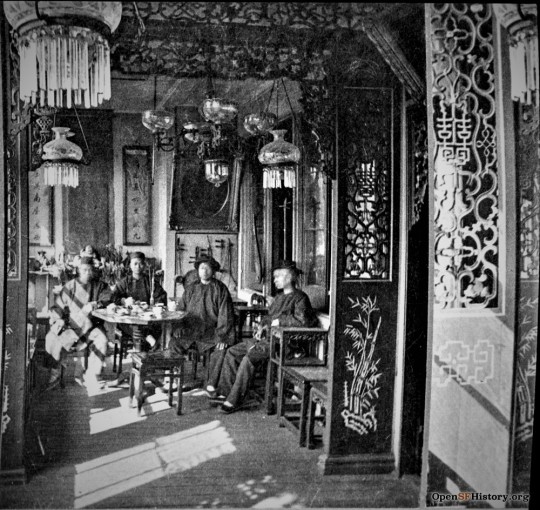
Interior view of four men around a tea table c. 1870′s (Photograph by Carleton Watkins -- Marilyn Blaisdell Collection). The tea room was probably located in the Yuen Fong Low restaurant (遠 芳芳樓) at 710 Jackson Street in San Francisco Chinatown.
Scenes from the Tea Room of the Yuen Fong Restaurant (遠 芳樓) on Jackson Street
Traveling the American West, Carleton E. Watkins (1829 - 1916) made thousands of mammoth and imperial plate photographs of the scenery found in the Yosemite Valley, Columbia River, the Sierra Nevada, and the Pacific Coast in Oregon. Many credit Watkins’ photographs of the Yosemite Valley as a key factor in Congress’ designation of Yosemite as a national park in 1864.
The master of late 19th century photograph also included San Francisco's Chinese quarter in his studies of pre-1906 San Francisco.
As Kelley Wolfe of the UCLA Library Special Collections wrote in 2017, “[d]uring the winter of 1871-72, Watkins expanded his San Francisco gallery (the Yosemite Gallery), which put an extra strain on his finances. When the Bank of California went under in 1874, Watkins lost his Yosemite Art Galley to competitors J.J. Cook and I.W. Taber. Not only did his competitors take over his Gallery, they took all of his negatives as well. Watkins then began the task of rebuilding his collection, which meant re-photographing many of the sites he had visited earlier in his career. "Watkins's New Series" of views replaced those lost in the foreclosure. Watkins did become re-associated with the Yosemite Gallery, first as a photographer, and later as manager, but never as the owner.”
From his studio-showroom, located a couple of blocks away on Montgomery Street, Watkins photographed numerous locales in or about Chinatown during the 1870’s and 1880’s. However, one series of stereographs -- all taken in one room – continue to delight viewers to this day, and gained particular mention by Stanford professor Gordon H. Chang in his book, Ghosts of Gold Mountain: The Epic Story of the Chinese Who Built the Transcontinental Railroad. The first two photographs here are considered in the order addressed by prof. Chang as follows:
“One of the most prominent photographers working in California at the time of the Transcontinental was Carleton Watkins, who established the studio on Montgomery Street in San Francisco in 1871, shortly after the railroads completion. Located just a few blocks from Chinatown, Watkins’ studio employed several Chinese to help reduce his stereographs and other images, and the products of their laborers often feature Chinese as well. More than thirty extant Watkins images have Chinese as the main or partial subject. His photographs of Chinese in San Francisco show them in Chinatown stores, temples, restaurants, and smoking establishments. His most arresting images are from the 1870s.
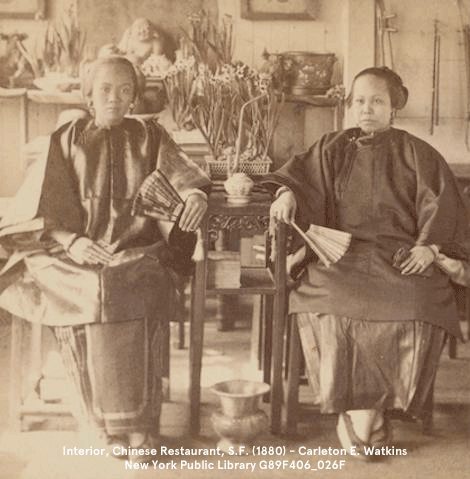
“Interior, Chinese Restaurant, S.F. (1880)” – Carleton E. Watkins. From the collection of the New York Public Library
"’Chinese Women, San Francisco’ [above] shows two fantastically silk-gowned women in a bright sunlit room full of Chinese tropical hardwood furniture, traditional string instruments, and art calligraphy. Partially visible elegant inscriptions declare that the owner of the artwork is a cultivated person. The setting is unlike anything most Euro-Americans at the time could ever have imagined existing on American soil. The women, who may be mother and daughter, seem relatively at ease; they do not appear to have bound feet (which suggests they are either Hakka or Manchu neither of whom engaged in the practice), and are clearly well-to-do. They hold painted fans, wear jade bracelets and rings, and are elegantly coiffed and groomed. An opium pipe sits on the table between them. . . .

“Interior Chinese restaurant, S.F. 3764″ circa 1875 (Photographer Carleton Watkins. Courtesy of Getty Open Content Program)
“A few moments later, to judge from the shifting shadows, Watkins took a second photo, ‘Chinese Actor, San Francisco’ (below) showing a young man in a spectacular Chinese opera costume. . . .

“Chinese Actor, S.F. 3765”
“. . . It must have shimmered and glowed with brilliantly colored socks and embroidery and red, blue, and gold thread,” Chang surmises. “He may very well have performed for Railroad Chinese in the Sierra or when they came to San Francisco for a visit. The altar behind him features of fine ceramic rendition of budai, the "laughing Buddha," the spirit of goodwill and happiness. The flowering narcissus and citrus fruit, possibly pomelo, indicate it is the time of the Spring Festival or Chinese New Year, a January or early February.” (Chang, p. 48)
As Prof. Chang’s book served a more expansive narrative about the Chinese role in the construction of the Transcontinental Railroad, his observations about Watkins’ work on that particular photo-shoot ended there. Consideration of various other prints of the same set of photos discloses a bit more information about the series from which additional deductions may be made.
Fortunately, a print of a wider angle of view of the daughter-mother and actor photographs still exist in other formats and which contain a captions confirming that the photographs were taken in a restaurant.

“B 3764 Interior, Chinese Restaurant, S.F.” Watkins’ New Series, Yosemite and Pacific Coast, 26 New Montgomery St., under Palace Hotel, S.F.
The caption on the card confirms that Watkins took the photo in a Chinese restaurant. One can also see in the extreme right side image that a sheet or curtain was hung opposite the windows; the sheet either simplify the scene or, more probably, reflect light back toward the subjects of the photo.
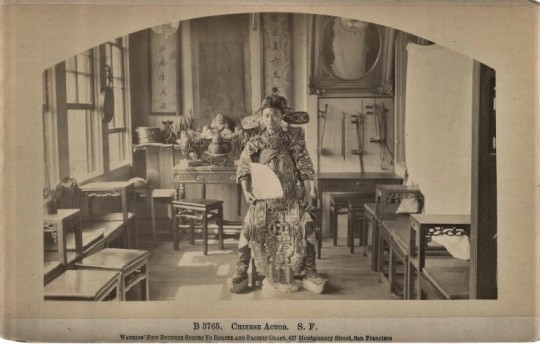
“B 3765. Chinese Actor. S.F.” c. 1870s. Photograph by Carleton Watkins (from the collection of the Getty Museum).
Similarly, a wider angle photograph of the Chinese actor may also be found in various collections. For example, the Getty has the above version of this image captioned in manuscript. As the Downtown Brown Books site states, Sotheby's sold an image very similar to the Getty's as part of a lot of boudoir views (on April 6, 2013), with a letterpress caption that included Watkins' street address with the note, "under Palace Hotel, S. F." Both the Getty and Sotheby's versions show not only the actor standing in the center but also show more of the wall decorations behind him and white curtain used for the session. This camera’s angle is also shifted slightly to the left.
The Downtown website declares that “Watkins is known to have employed a Chinese-American darkroom assistant, Ah Fue, who may have helped give him access to people and locations not normally visited by white photographers. Based on Peter Palmquist's checklist of Watkins' stereoviews—one of which was a cropped version of this photograph—this image likely dates from the late 1870s.” The curator for the website speculates about the identity of the actor as follows:
“According to the Sacramento Bee (7 March 1879), Long Yow was the leading male Chinese actor of the day in San Francisco, earning $6700 per year performing in Chinatown's two theaters. This image could be him or one of the half-dozen other leading players on the stage at the time.”
A third photograph which was probably taken on the same day as the aforementioned two stereographs is seldom mentioned, and it conveys additional, important information applicable to all of the photographs.

“B 3764 Interior Chinese Restaurant, Jackson St., San Francisco” c. 1870′s. Photograph by Carleton Watkins (from the collection of the California State Library).
The state librarian observes that the photograph shows a “seated man and woman in traditional Chinese dress, holding fans. Scattered tables line edge of room, flowers in pots along back wall. Two framed calligraphic texts on back wall, a framed painting to right, below painting a display of Chinese musical instruments. Possibly photographed by Carleton E. Watkins.”
A comparison with the preceding photos will disclose that the state librarian’s speculation was well-founded. The photo not only shows the same room in which photographs were taken of the actor and the daughter with mother, but the same older woman now appears in the third photo with a second person whom one can presume is her merchant husband. The background details are identical to those seen in the other two photographs. Additionally, we now know the approximate location of the restaurant in which the entire photographic series was produced, i.e., Jackson Street.

“Interior Chinese restaurant, S.F. 3762” circa 1875. Photographer Carleton Watkins c. 1875 (from the New York Public Library, Robert N. Dennis collection of stereoscopic views)
The above stereograph shows four men sitting in the same restaurant sitting-room as the photos of the Chinese actor and merchant couple, plus daughter. The image appears candid, devoid of any indication that the subjects were posed and the lighting prepared. The articulated screen panels used by Chinese restaurants of that day outside of the room are open, allowing sunlight from windows to play across the floor in the foreground. The number “3762” indicates that the photograph may have been taken earlier in the 3760-series of Watkins’ photos discussed above, perhaps when Watkins or an assistant scouted the location.
As to the location for the shoot, the merchant-spouse photo appears to rule out the established and well-known restaurants such as Hang Far Low and Woey Sin Low in the 700 and 800 blocks of Dupont Street. The Jackson St. clue prompts the question as to which restaurant’s room on that street served as the location for this fascinating series of images.
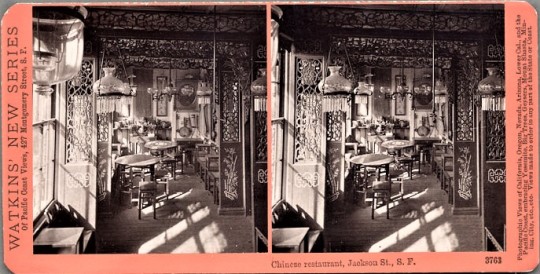
Chinese restaurant, Jackson St., S.F. 3763 (Photographer Carleton Watkins from the collection of The California Society of Pioneers)
The number 3763 in the series and as shown in the above stereograph of the same, but empty, room implies that Watkins took a photograph of the room after the quartet of tea drinkers shown in number 3762 had departed.
The next earlier photograph in the numerical series, no. 3761, shows the exterior of a restaurant on Jackson Street. Based on the series numbers, one can reasonably infer that Watkins took his first photo of the exterior of the restaurant to which he would gain access for his tearoom photo series.
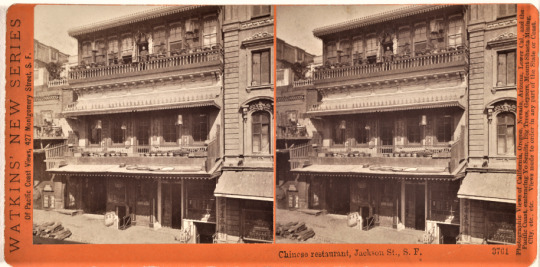
Chinese Restaurant, Jackson St., San Francisco. 3761 (Photographer Carleton Watkins from the collection of Bill Lee)
Thanks to a couple of other photos of the north side of Jackson Street (between Dupont and Stockton Streets), plus information from available business directories for the range of years during which Watkins took his photographs, the name and address of the Jackson Street restaurant can be established.

From "Chinese Restaurant, Jackson Street, San Francisco [California]. Watkins' New Series 3761" Photographer: Carleton E. Watkins (UC Berkeley, Bancroft Library). The Globe Hotel building, at the northwest corner of the intersection of Dupont and Jackson streets, appears to the right of the frame.
Collector Wong Yuen-Ming’s examination of the very fragmentary signage seen at the ground floor level indicates the presence of an herbalist shop (identified by the 各省生熟藥材 signage on the adjacent building east, down the slight street incline and in the right-hand side of the frame). An examination of the contemporaneous business directories for Chinatown discloses that the only restaurant with an adjacent apothecary address occupying the street during the period in which the photo was taken was Yuen Fong [遠芳; canto: “yuen fong”; lit. “distant fragrance”] & Co. at 710 Jackson and either the Quong Chi Tong or (by the 1885 Langley directory publication), the “Oy Wo Tong & Co. druggist” at 708 Jackson.
Both Yuen (a.k.a. Yune) Fong restaurant and the herbalist store had established themselves during the 1870’s.

Listing for the “Yuen Fung Low” (遠芳樓) restaurant at 710 Jackson Street in the 1871 Wells, Fargo Co’s Express directory of “Address of Principal Chinese Merchants in San Francisco, in Chinese and English, for the guidance of our Agents in Addressing Letters.”
The establishment of the businesses during the prior decade at 708 and 710 Jackson Street assured that their land uses were noted on the San Francisco Board of Supervisors map of Chinatown in July 1885.

Detail of the 700-block on the north side of Jackson Street, July 1885 (from the Cooper Chow collection of the Chinese Historical Society of America). showing a Chinese drugstore and restaurant, respectively, at 708 and 710 Jackson street.
The earliest mention of the restaurant as “Yuen Fong & Co., (Chinese) restaurant 927 Dupont” appears in the Langley directory of 1868. By the publication of the 1871 Wells Fargo directory of Chinese merchants, the restaurant had moved to Jackson Street (and Langley directory of 1871 lists the name as “Yune Fong, (Chinese) restaurant, 710 Jackson” but garbles the name in 1876 with typographical errors as the “Yone Fong, 1710 [sic] Jackson”).
As indicated by its telephone number listing of “China 67” for the “Yuen Fong & Co, Restaurant 710 Jackson” in the AT&T directory of 1905, the Jackson Street restaurant which commanded Watkins’ attention would operate until the disaster of 1906. Regrettably, the restaurant, the setting for a captivating set of images, would not re-establish itself in the rebuilt Chinatown.

“6661 Jackson St. Chinatown. S.F.” no date. Photographer unknown (from the collection of Wong Yuen-Ming). The Yuen Fong restaurant (遠芳樓; canto: “Yuen Fong Lauh”) at 710 Jackson Street, with its larger canopy over the second floor balcony, is seen at the center of the photo. The higher elevation of the Globe Hotel located at the northwest corner of the intersection of Jackson and Dupont streets is seen right of center.
[updated: 2023-4-29]
#Jackson St restaurant#Yuen Fong 710 Jackson St.#Carleton Watkins#Gordon H. Chang#Ghosts of Gold Mountain#Globe Hotel
4 notes
·
View notes
Text
A Comparison Of Contemporary Landscape Photography With Traditional 19th Century Landscape Painting
The aesthetics of both contemporary landscape photography and traditional 19th century landscape painting hold much the same purpose, the objectification of nature as a servant to human kind. Both practices give misguided representations that nature is something which is ours to have. This way of seeing is an anthropocentric hangover that has no place in contemporary aesthetics because the belief that nature is ours to have because it belongs to humans is outdated and no longer practical or realistic in today’s world.
19th century landscape painting is from a time when all people believed all of everything on Earth was here exclusively for humans to exploit, consume and dominate as they please. There were scientists and thinkers during this century who began to consider that perhaps nature was not here for us. Alfred Russell Wallace wrote in his book, The Malay Archipelago, that he noticed that very large fruits grow on very tall trees throughout the region. He suspected if one of these large fruits should fall on a human from such a height, it would likely kill them. He questioned why and if these plants were truly put there by god with exclusive reference to human kind. I am guessing that at the time, not many Europeans had seen large fruits growing on incredibly lofty trees.
Another figure, who had thoughts like this in the same era, was Henry David Thoreau. His book Walden explores what it is to live off the land without exploiting the land or the creatures on it. He did not hunt or keep animals and he grew a permaculture-esque farm/garden. He did this as capitalism was still growing into the dominant way of living in the western world. It is incredibly compelling to read the experiences of someone rejecting the latest fashion trends, a glamorous life based around financial assets and the need to eat meat on a daily basis in the context of that particular moment on the timeline of human history. The themes central to this book examine the state of the world and the ways in which people live on it and engage with it, the observations Thoreau makes are pertinent to scrutinising how we exist today.
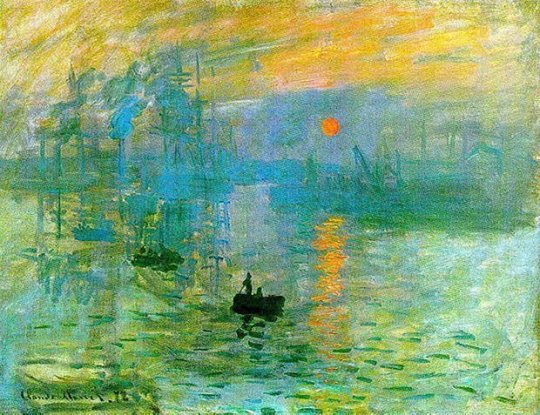
Sunrise - Claude Monet
Landscape painting from this time does not share the same progressive thinking. At least, if it did at all, that is not why the paintings are cherished today. The 3 examples I have chosen, each show a romanticised view of a landscape that has been largely altered by the domineering presence of humans. The views also show people working or give the idea of work. Work is an unnatural process exclusive to humanity, it is the method and process of human domination of nature. In his book, Future Primitive Revisited, John Zerzan refers to this as the division of labour. Zerzan explains that there is a symbiotic relationship between the division of labour and domestication of humanity and nature that perpetuates negative cycles in human social structures.
Monet’s Sunrise shows what is still celebrated today as a beautiful sunrise scene. In reality it is a factory. Based on the era in which it was painted, it is presumably full of workers in poor working conditions. The factory is causing a great smog which is completely altering how the view of the river before it appears. The painting beautifies the cancerous smog as scenic and romanticises the factory as if it is something other than an eyesore, filled with miserable people. By extension, it celebrates the idea that humans and nature are here purely to serve capitalism by being functional workers. Humanity, in this painting, is not shown as a part of nature but as a tool for its subjugation.
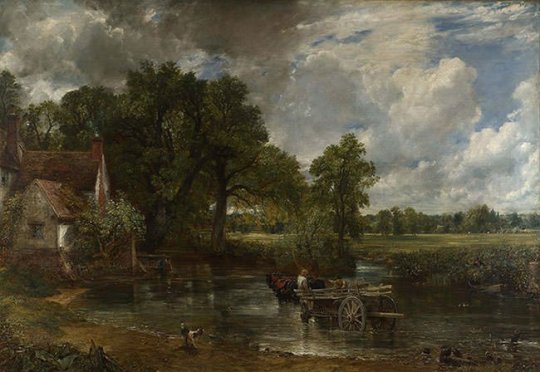
The Hay Wain - John Constable
The Hay Wain by John Constable gives us a peaceful view of a man working the landscape of his farm with his horse and his dog. This painting is renowned for its beauty. Constable’s paintings have been so celebrated, that the entire area where they were mostly created is still preserved to this day as the Dedham Area Of Outstanding Natural Beauty (ANOB). This so-called beauty is the farmed landscape of south-east England. This area was once, in its entirety; ancient, deciduous woodland but is no longer so due to the consequences of work and human activity.
This molestation of an entire habitat is something the British government seeks to preserve for tourism and capital gain. This is done under the guise of maintaining the lie that the quiet countryside of little England is; A: a reality available for all to attain B: a beautiful thing because it is still in it’s natural state. Again, within a painting celebrated for its beauty in depicting nature, we have ugliness and artificiality. A destroyed habitat, forced animal labour of the horse, a dog breed (Border Collie) selectively bred to exploit obsessive behavioural tendencies and forced to work. Here again, humans, animals and the land represent the means of the domestication of nature in order to create an artificial, human-dominated landscape. This painting tells us that nature only has merit if it has a purpose in serving the functionality of the human world. Nothing about it is natural, or beautiful.

Ivy Bridge, Devonshire - JMW Turner
Ivy Bridge, Devonshire by JMW Turner is similar to the previously mentioned landscape paintings. The natural landscape is sliced by a bridge being crossed by a horse-drawn cart in an area of England densely littered with ANOBs. I am not certain if each of the artists’ intentions were necessarily to celebrate these altered and artificial landscapes as natural beauty in their works. It is said that Turner wrote a poem of his experiences working on the Devonshire commissions revealing that the landscape raised questions about morality for him. It could be that Turner and the landscape painters of the 19th century were attempting to expose the fakeness of the setup. Nonetheless, the paintings are today incorrectly treasured as depicting the beauty of the world in it’s natural state.
The foundation of the idea that these paintings display to us natural beauty come from the views of people who lived in an era when it was conventional to believe that the Earth and nature were there for humans to sculpt in whatever way they liked. This essentially means that to celebrate these paintings today as natural and beautiful is to celebrate human domination of Earth and the domestication of its people and creatures. This celebration preserves two great lies. The first lie is that the Earth, as manipulated by humans, is in it’s natural state. The second lie; This manipulation, caused by human domination, is beautiful.
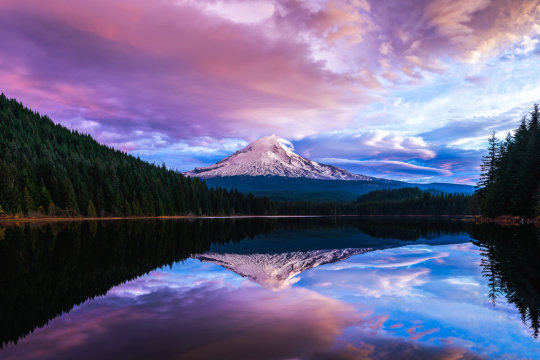
Thomas Heaton
All of the contemporary-traditional landscape photographers I have looked at are well known on instagram and each of their posts boast thousands of likes, often in the name of conservation. When I look at their photographs, I feel uninspired. How could this be so? Nature is inspiring. They are technically spectacular photographs of incredible scenery but post-production techniques such as the over-saturation of the colours create an unrealness. This is uncomfortable because it presents nature as having to be more than what it actually is to be considered a sight worthy of seeing. While thousands of people do engage with these photographs online, what does it do now for changing how we intereact with nature? How does it change the fundamental way we see the world and does it seek to change the anthropocentric viewpoint that the world is here for us?

Daniel Kordan
This style of photography has not progressed much since Ansel Adams pioneered it last century. Someone told me that this kind of photography is important because it shows people what we stand to lose if humans continue on this path of domination and extraction of nature. I ask the question then, is this tactic flawed? This method of revealing the beauty of nature in photography is not new. It has been a somewhat ubiquitos model for conservation and widespread awareness of nature in photography since Ansel Adams began his career in the 1920s. While this has achieved some huge successes in protecting wild landscapes, these very landscapes are still under threat.
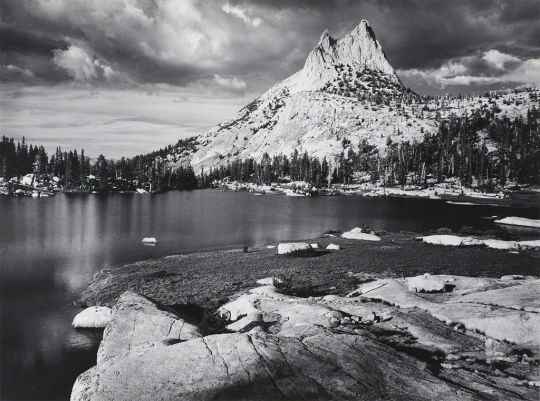
Ansel Adams, Cathedral Peak and Lake, Yosemite National Park, 1938
Climate change, habitat & biodiversity loss are not known as entities who recognise borders and boundaries. Our activies outside proctected areas affect what is within them. I view this kind of photography as a green-washing activity. Consciously our not, these photographers play into the narrative that the landscape is something to be conquered. This is reflected in the corporate funding these photographers receive to travel the world and take these spectacular shots and then share them online with generic captions such as “Get out there and live it.”
The consequnece of this tactic inspires swarms of amateur photographers into contributing to destructive tourism practices, not to mention the volume of iphones and camera gear purchased. These tourists flood the landscape and attempt to recreate, often successfully, the style of their favourite landscape photographers’ work. They too can share the images on social media and receive kudos for how in touch with nature they are, compliments are given to their highly technical photography.
This style of photography ignores at large the impacts of current ways in which the human world engages with nature. These photographers leave the inevitable cigarette-butts, food packaging and other litter spread throughout almost any natural landscape out of frame. They might not even see the trash, it is hard to see human waste in a landscape when you do not want to see it. If photographs dealing with conservation of nature showed us the real way in which we interact with nature, would humans therefore be able to finally see nature?
This raises the question of what makes the professional a more worthy artist than the amateur recreationists? The method is also boring, old fashioned and it does not work. Why is climate change etc. getting worse if the tactic of showing people what we might lose is successful? This is because it is not, truly successful. It creates a narrative that the world is our pretty little thing to look at and this objectifies it. Photographers are asking people to look, but not see. In essence, professional landscape photographers whore out to us 5-second-views of a world that really requires vast amounts of time invested in multi-sensory observation to actually see. This tactic does nothing to push for a fundamental shift in how all humans interact with the more-than-human natural world because it does nothing to ensure that nature is seen. If nature is not even seen, how can we challenge the ways which humans see it and engage with it? The practice of how nature is represented in art must change in order to facilitate a change in the ideological practice of seeing nature.
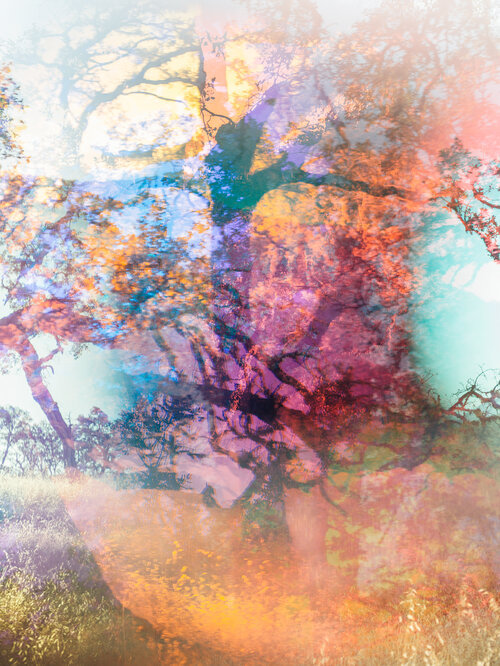
Psychescape - Terri Loewenthal
Photographers like Terri Loewenthal speculate that perhaps the views of nature offered from art is a gendered issue and that we are too used to male-dominated views of the world. She seeks to reject technically-accurate recreations of landscape through photography by choosing to explore imperfection with her photographic practice. She does this in her Psychescape series of works by using a hand-built optic that manipulates the colours and shapes in a photograph at the moment of shooting. She is changing how her camera sees the world, in order to ask us to change how we see the world. Loewenthal intends to achieve this, unlike Ansel Adams and so many after him, by not keeping the human world out of shot. To show views of nature that include humanity which are beautiful in their coexistence.
Contemporary landscape photography and traditional 19th century landscape painting share a similar view of the world in both aesthetics and ideology. They continue to feed a narrative that the human-world is outside of the natural world, that the two are separate. The practice of doing so has led to a great un-seeing of nature from humans in art and lived experience. We know that we need to change the ways in which humans live and interact with the world in order to ensure that humans can continue to exist in the world. We know that it is necessary for humans to coexist with nature in order to take steps in dealing with climate change and other such natural world catastrophes of the contemporary era. For a long time, landscape painting and landscape photography has refused to play a role in changing how we see nature by showing human dominated views and misleading interpretations of the way that nature is before us. Artists are now seeking to show that humans and nature are part of the same whole. Rejecting views which celebrate the human domination and domestication of nature by bringing the interconnectedness of humans and nature into aesthetics is key to fundamentally shifting the role of art in shaping how humans see nature.
#landscape painting#landscape photography#traditional#nature#climate change#art#art writing#claude monet#john constable#jmw turner#ansel adams#national park#yosemte national park#dedham area of outstanding natural beauty#aestheitcs
4 notes
·
View notes
Text
Free [download] [epub]^^ Ansel Adams 2021 Wall Calendar READ ONLINE
[PDF] Download Ebook | READ ONLINE Ansel Adams 2021 Wall Calendarbody {font-family: Helvetica, Arial, sans-serif;}#example1 {border: 2px solid black;padding: 25px;background: lightblue;background-repeat: no-repeat;background-size: 100% 100%;}nav {margin:auto;text-align: left;width: 80%;font-family: roboto;}nav ul {list-style: none;position: relative;display: inline-table;width: 80%;}nav ul li{float:left;}nav ul li:hover{background:#FFFF00;}nav ul li:hover a{color:#000;}nav ul li a{display: block;padding: 25px;color: black;text-decoration: none;}p{position:absolute;top: 20px;z-index: 2;color: black;background-color:yellow;}Free [download] [epub]^^ Ansel Adams 2021 Wall Calendar READ ONLINE
Ansel Adams 2021 Wall Calendar
[PDF] Download Ansel Adams 2021 Wall Calendar Ebook | READ ONLINE
Author : Ansel Adams
Publisher : Ansel Adams
ISBN : 0316420980
Publication Date : 2020-7-28
Language :
Pages : 24
To Download or Read this book, click link below:
http://read.ebookcollection.space/?book=0316420980
{Kindle}
Synopsis : Free [download] [epub]^^ Ansel Adams 2021 Wall Calendar READ ONLINE
Experience the creative vision of iconic artist and environmentalist Ansel Adams via this durable wire-bound wall calendar, featuring generous space for recording monthly schedules.  Ansel Adams' 'Authorized Edition' calendars have been a beloved annual tradition for over 35 years. The 2021 wall calendar includes:Fourteen exquisite black and white landscape photographs, carefully selected and sequenced to reflect the changing seasons.Large format 12.8' x 15.6' wall calendar (25.6' x 15.6' open).Spectacular views from Yosemite National Park, Denali National Park, Mount Rainier National Park, Canyon de Chelly National Monument, White Sands National Park, and more.The perfect inspirational gift for lovers of fine art, photography, National Parks, and the outdoors.Printed in rich duotone on premium paper stock, making each page suitable for framing at year's end.Features US and Canadian legal holidays, phases of the moon, and major religious holidays.Printed and manufactured in the United States of America. The photographs of Ansel Adams are among America's finest cultural treasures, and form the foundation of his tremendous legacy of environmental activism. One of the most influential artists of the 20th century, today his vision is as relevant and convincing as ever.  More than 45 years ago, Ansel Adams selected Little, Brown and Company as the sole authorized publisher of his photography. At the same time, he established The Ansel Adams Publishing Rights Trust in order to ensure the continuity and protection of his legacy—both artistic and environmental. As Adams himself wrote, “Perhaps the most important characteristic of my work is what may be called print quality. It is very important that the reproductions be as good as you can possible get them.†The authorized books, calendars, and posters published by Little, Brown have been rigorously supervised by the Trust to make certain that Adams’ exacting quality standards are maintained.  Only such works published by Little, Brown and Company may be considered authentic representations of the genius of Ansel Adams.  For more ways to enjoy the photography of Ansel Adams, look for the Ansel Adams 2021 Engagement Calendar, and Ansel Adams’ Yosemite.
1 note
·
View note
Photo

Circa 1865. "Mirror Lake, Yosemite Valley, albumen silver print. Carleton Watkins (1829 - 1916), an early photographer of Yosemite, captured this pristine view of Mirror Lake while most of the country was engaged in the Civil War (Read more)
View full size
11 notes
·
View notes
Text
Unanswered Questions on Professional Wedding Photographer

OK you have opted to employ a photographer. He or she should have been doing photography for quite a while and will know how to handle unpleasant surprises with a lot of calm and tact. He or she will focus on photos, as they are paid for it.
You surely require the photographer who's capable of recording all the activities of a bride together with the groom and the relatives you have invited. Ultimately, meeting your photographer in person is undeniably necessary.
Our crew of photographers will take photos you can look at to remind yourself of the occasion. If it comes to wedding photography, choosing a professional photographer is extremely important. There are lots of photographers who possess the necessary experience and expertise to capture all the lovely and superb moments of the wedding.
If you're seeking to heavily invest in a wedding photographer, you need a person who is aware of what he or she's doing. The photographer at a wedding is among the most crucial and wishes to be sure to locate a professional wedding photographer with work worthy of respect. A seasoned wedding photographer ensures perfection which you will love and admire.
One of the very first things you are going to want to do after securing a venue for your wedding is to retain the help of a professional photographer. The value of employing a professional photographer cannot be stressed enough, and there is absolutely no reason to risk missing out on a single moment at your wedding. It's a fact that there are several successful wedding photographers that produce a great deal of money.
In some instances, in many regions of the nation, California included, wedding photographers must pay sales tax even if they're charging a flat fee for their services. In areas like Newyork, it might be hard to find the ideal Yosemite National Park Adventure Elopement Photographer. For those who have knowledge about a few of the very best photography providers, it is going to be simple to make decisions to employ the very best prenuptial photographer Dubai for your special occasion.
A professional has the whole necessary gadget in order to take pictures correctly. Folks can print out their very own photographs within a moment. Photographers do a whole lot more than simply showing up and taking pictures.
It isn't easy to generate a decision when it has to do with hiring any goodwedding photographer Dublin. Professional photographers' customers gain from the newest professional technology used in the photographs.
A photographer needs to have a good understanding of camera management, lighting arrangement, direction, position, and several others. They even offer engagement coverage. They make the mistake of reducing the quality of work to high dollar camera bodies and expensive lenses.
Choi hopes other couples won't need to experience similar negativity later on. 5 Reasons Why You need to Hire One! Moreover, picking a wedding venue in San Diego is another wonderful choice to earn everything appear beautiful and refined.
A skilled photographer is armed with ample quantity of expertise and is ready to seize every small moment feeling and emotion at the appropriate time with the right click. Give them time Many individuals wrap the wedding ceremony early and don't want to provide time to the providers. When a couple decides to get married, lots of planning can go in the wedding ceremony and reception, based on the size.
1 note
·
View note
Text
Pdf [download]^^ Ansel Adams 2021 Wall Calendar EBook
Pdf [download]^^ Ansel Adams 2021 Wall Calendar EBook
Ansel Adams 2021 Wall Calendar

[PDF] Download Ansel Adams 2021 Wall Calendar Ebook | READ ONLINEhttp://read.ebookcollection.space/?book=0316420980
Author : Ansel Adams
Publisher : Ansel Adams
ISBN : 0316420980
Publication Date : 2020-7-28
Language :
Pages : 24
To Download or Read this book, click link below:
http://read.ebookcollection.space/?book=0316420980
Free [epub]$$
Synopsis : Pdf [download]^^ Ansel Adams 2021 Wall Calendar EBook
Experience the creative vision of iconic artist and environmentalist Ansel Adams via this durable wire-bound wall calendar, featuring generous space for recording monthly schedules.  Ansel Adams' 'Authorized Edition' calendars have been a beloved annual tradition for over 35 years. The 2021 wall calendar includes:Fourteen exquisite black and white landscape photographs, carefully selected and sequenced to reflect the changing seasons.Large format 12.8' x 15.6' wall calendar (25.6' x 15.6' open).Spectacular views from Yosemite National Park, Denali National Park, Mount Rainier National Park, Canyon de Chelly National Monument, White Sands National Park, and more.The perfect inspirational gift for lovers of fine art, photography, National Parks, and the outdoors.Printed in rich duotone on premium paper stock, making each page suitable for framing at year's end.Features US and Canadian legal holidays, phases of the moon, and major religious holidays.Printed and manufactured in the United States of America. The photographs of Ansel Adams are among America's finest cultural treasures, and form the foundation of his tremendous legacy of environmental activism. One of the most influential artists of the 20th century, today his vision is as relevant and convincing as ever.  More than 45 years ago, Ansel Adams selected Little, Brown and Company as the sole authorized publisher of his photography. At the same time, he established The Ansel Adams Publishing Rights Trust in order to ensure the continuity and protection of his legacy—both artistic and environmental. As Adams himself wrote, “Perhaps the most important characteristic of my work is what may be called print quality. It is very important that the reproductions be as good as you can possible get them.†The authorized books, calendars, and posters published by Little, Brown have been rigorously supervised by the Trust to make certain that Adams’ exacting quality standards are maintained.  Only such works published by Little, Brown and Company may be considered authentic representations of the genius of Ansel Adams.  For more ways to enjoy the photography of Ansel Adams, look for the Ansel Adams 2021 Engagement Calendar, and Ansel Adams’ Yosemite.
0 notes
Text
Reading report: Art and Ecology Now - Andrew Brown
Reading report:
Art and Ecology Now – Andrew Brown
Andrew Brown introduced a nature-focused book, Art and Ecology Now, which contains a peaceful tone of voice to inform the achievements of many artists throughout the time, especially from 1960s. His book includes more than 300 colour illustrations and over 90 artists’ and activists’ engagement, from those who turn physical environment into their raw material for their art, to those who record and reflect back on nature. In the beginning chapter ‘At the radical edge of life’, Brown clearly introduces the challenge that artists are dealing with, in order to broaden our concept of the connectivity, erase the border between art and natural life and to change our attitudes and habits.
Initially, Brown obviously indicates that this book is not mentioning any political or environmental dilemma, but providing us a comprehensive view of contemporary art and ecology (Martin Spray, 2014). In this case, artists often collaborated with environmental specialists to answer the raised questions, so that both expertise can use their unique professional methods and techniques to improve their work. Intertwining knowledge between two or among many fields of subjects always bring remarkable achievement, such as the combination of biology and chemistry develops medical fields, etc. However, Brown does not backslide into scientists’ responsibility, he specifies that:
“Merely asking the questions is often enough […]. The artist is free to question and redefine anything or everything at any stage, to be wide-ranging and open to all possibilities.” (p. 8)
Brown uses the time chronicle to justify the effect of nature on art, art on our attitudes and our behaviors on nature, mentioned in the part The Root of an engaged practice. Specifically, he researches further back in history, from human’s reliance on nature for survival in thirty millennia ago, to the advance of technology today. Phillips (2015) agrees that Environmentalism is a contemporary phenomenon but not a new concept. Environment played a role in Romanticism in the early 19th century, not only in art, but also in literature. However, landscape and still-life paintings in the Renaissance in Europe did not focus on, or just used the environment as the background, mainly in order to serve the purpose of religious belief and nobles and express skills of artists. Hence, the influence of environmental art was not the main message that artists want to deliver.
The period of 1960s was not a random stage of art that Brown could choose at his will, it was the period of revolutionary thoughts and actions of avant-garde movements (Pantelić, 2016). Only since the explosion of Industrial Industry in Eighteenth century, uncountable amount of natural resources was exploited unrestrainedly, climate change has a clear impact on human more than ever, and with the popularity of technology, ecological art can reach to more audiences.
And artists’ works has been paid off by the positive actions of political leaders. Specifically, more national and city parks were created in Western country, Yosemite Valley became the first national park by Abraham Lincoln’s act.
Brown arranges the powerful illustrations on two sides and the content in the middle, as if he was leading us through his collection of artworks by his speech. This method makes the reader have to halt and contemplate the picture, sometimes it is a little off-pudding to switch around the text and the pictures. Debatty (2014) added that with the impressively selected number of artworks, she found it truly important and stimulating. However, it would be better if the readers can discover more pioneering works, rather than the year of birth of each artist under their name, recommended Debatty (2014). By reading the introduction of the book only, the readers can be easily misled to understand that Brown just concentrates on the works of American and Europe artists specifically. Not until the following chapters of the book did he mention photographs of desertification in China, and brief information of Lake Chad in Africa.
Published in 2014, Art and Ecology Now still brings its value through time and attracts remarkable respect from readers. It can be positive inspiration for many artists, activists and the public in the future. This book is similar to a journal that records achievements of effort to conserve and protect the environment, and can be thickened up year by year. In the At the radical edge of life, Brown objectively summaries the broad view that the book contains, from the ancient art on walls and ceilings, to practical activities by political leaders in order to directly raise the controversial issues.
REFERENCES:
Brown, A. (2014) ‘At the radical edge of life’, in Art and Ecology Now. London: Thames and Hudson, 2014), pp. 6–15.
Phillips, R. (2015) What is environment Art?. Available at: https://www.healing-power-of-art.org/what-is-environmental-art/ (accessed: 12th Jan 2021)
Pantelić, K. (2016) 1960s Art and the age of Pop. Available at: https://www.widewalls.ch/magazine/1960s-art (accessed: 12th Jan 2021)
Debatty, R. (2014) Book Review: Art and Ecology Now. Available at: https://we-make-money-not-art.com/art_and_ecology_now/ (Accessed: 13th Jan 2021)
0 notes
Text
What Sort of Photography Do You Need?
People catch pictures for a ton of intentions, arranging from over-sentimental motivators to incredibly helpful tensions. Catching pictures may perhaps be a masterful structure, a nuclear family hobby in any case a previous commitment. In like manner, gazing at pictures keeps us in contact with the past occasions, proceeds with us instructed of happenings additionally allows us to esteem innovativeness.
Photography is a noteworthy capacity plot that contains more than essentially depiction, landscape or charm taking pictures. Commonly specific and amateurish picture takers may uphold exact assortments of photography more than others. Albeit a specialist picture taker may potentially work in photojournalism, an incompetent may be basically entranced in huge photography.
Catching pictures can be as easy as situating the photographic camera, clicking and wanting noteworthy ends up. A ton of occupants catch pictures in this manner Regardless, this strategy may be incongruent: now and again it works and every so often it doesn't.
Things being what they are, which sort of photography do you need? Here is a thorough rundown of the sorts of photography:
Portrayal Photography-Documental photos illuminate stories with pictures. The significant difference among photojournalism and portrayal photography is that portrayal photography is bound to give as a past portrayal of a political or amiable period while photojournalism speaks to a particular possibility or event.
Photojournalism-Despite the fact that untalented may ended into this part of information lacking of appropriate readiness, photojournalism is oftentimes limited to capable. One reason photojournalism is often refined by specialists is that calm photojournalists must be certain that their shots maintain the dependability of the remarkable view.
Photojournalism involves the picture taker to catch just the basics: no change or misrepresentation of the picture is permitted. Photojournalism pictures are habitually powerful pictures that arraign the onlooker with the data topic. Cognizing how to acquire determined shots to decipher the exceptional sensation is as often as possible found just over time of execution and comprehension.
Full scale Photography-Large scale photography recognized the subject field of photography in which pictures are caught at close up extension. At the point when restricted to focal point men with improved and extravagant device, large scale photography is presently simple for untalented to try through advanced cameras by methods for full scale climate. Large scale photography topics may involve arthropods, plants life, just as the outside of a woven pullover in any case some substance where close-up taking photographs uncovered engaging informations.
Activity Photography-However specialists who catch moving shots may move in a variety of different topics, games photography is one of the snappiest and most stimulating styles of taking photographs. Much the same as a few activity shot, a phenomenal games focal point man must be familiar with their topic fine sufficient to anticipate that when should catch pictures. Fundamentally the same as guideline goes for picture takers enamoring moving shots of fauna creatures in common world or of a plane takeoff.
Miniature Photography-Microphotography utilizes devoted cameras and magnifiers to dazzle pictures of colossally small articles. Most of use of microphotography is better reasonable for the precise mankind. For example, microphotography is practiced in branches of knowledge as changed as common way of thinking, natural science and clinical science.
Showcasing Photography-This is on the grounds that photography plays out a significant part in promoting, a great deal of master picture takers commit their callings to advertising photography. The need for sole and perceptible showcasing proliferation implies the photographic artist may work with various types of taking pictures, just as full scale photography and magnificence photography.
Excellence Photography-Magnificence photography, here and there misidentified with erotic entertainment, may be horny and stimulating aside from it isn't explicit. On the other hand of focusing on exposure or fierce stances, allure photography searches out to hold onto its topic in suggestive stances that offer accentuation to shapes and shades. As the name involves, the target of magnificence photography is to decipher the good example in a shocking splendor. Accordingly, loads of charm shots bear prodding, unexplained and amiable qualities.
Ethereal Photography-An airborne picture taker packs in catching pictures from the air. Photos may be used for checking on or building, to hold onto feathered creatures or atmosphere on film or for military goals. Aeronautical focal point men have utilize planes, especially lights, parachutes, tourist balloons and far off controlled carrier to catch pictures from the climate.
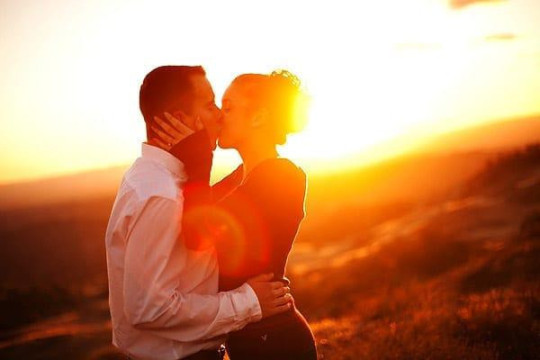
Creative Photography-Innovative photography can hold a wide choice of topics. While a characteristic world picture taker may utilize undersea taking photos to produce a workmanship show dependent on marine life, a portrayal photographic artist's delight may credit high contrast inventive depiction. By and large cases, the shoots ought to have masterful essentialness to be view as aesthetic creation.
Marriage Photography-Marriage photography is a blend of different styles of taking photos. Despite the fact that the pre-marriage ceremony photo collection is a narrative of the marriage day, marriage photos can be improved and changed to produce a combination of enhancements. For example, a focal point man may deal with a few of the photos with rosy earthy colored orchestrating to give them an extra conventional, suffering look.
Submerged Photography-Subsurface photography is regularly in work by scuba jumpers. Then again, the cost of scuba plunging, connected with much of the time lavish and off-kilter undersea picture making contraption, makes this one of the less successive styles of taking pictures. In like manner, if an incompetent has the device and the scuba information, enrapturing shots beneath the surface can be troublesome, as scuba wellbeing glasses are exaggerated and distort the picture taker's representation.
Travel Photography-Travel photography may degree various sorts of photography, just as publicizing, narrative or lingo photography that depicts an essentially nearby or sequential taste. A movement focal point man can catch the feeling of a site with commonly views and depiction.
For More Information:- Yosemite wedding photographer
0 notes
Photo

@conneryfilm International Wedding Photographer www.conneryfilm.com Booking/info: 818.749.7039 . . . . . . . . . . #famfirst #familylove #familyouting #familytrip #familiesareforever #familyvacation #familyportraits #famiglia #engagement #ido #weddingphotographer #weddinggown #engaged #theknot #weddinginspiration #engagementring #bridesmaid #weddinginspo #bridesmaids #conquer_la #weownthenight_la #discoverla #losangelesgrammers #conquer_ca #canonphotos #canoneos #canonrebel #canonphotographer #focalmarked (at Yosemite National Park) https://www.instagram.com/p/CCZlj4nHzqo/?igshid=bwtbh6mcw9kz
#famfirst#familylove#familyouting#familytrip#familiesareforever#familyvacation#familyportraits#famiglia#engagement#ido#weddingphotographer#weddinggown#engaged#theknot#weddinginspiration#engagementring#bridesmaid#weddinginspo#bridesmaids#conquer_la#weownthenight_la#discoverla#losangelesgrammers#conquer_ca#canonphotos#canoneos#canonrebel#canonphotographer#focalmarked
0 notes